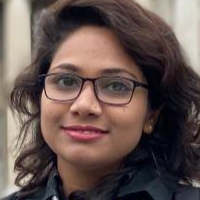International Journal of Information Technology and Computer Science (IJITCS)
IJITCS Vol. 13, No. 4, 8 Aug. 2021
Cover page and Table of Contents: PDF (size: 502KB)
Fish Image Classification by XgBoost Based on Gist and GLCM Features
Full Text (PDF, 502KB), PP.17-23
Views: 0 Downloads: 0
Author(s)
Index Terms
Fish image, classification, Gist, GLCM, Boosting ensemble, XgBoost
Abstract
Classification of fish image is a complex issue in the field of pattern recognition. Fish classification is a complicated task. Physical shape, size, orientation etc. made it complex to classify. Selection of appropriate feature is also a great issue in image classification. Classification of fish image is very important in fishing service and agricultural field, fish industry, survey applications of fisheries and in other related area. For the assessment and counting of fishes, classification of fish image is also necessary as it can save time. This paper presents a fish image classification method with the robust Gist feature and Gray Level Co-occurrence Matrix (GLCM) feature. Noise removal and resizing of image is applied as pre-processing task. Gist and GLCM feature are combined to make a better feature matrix. Features are also tested separately. But combined feature vector performs better than individual. Classification is made on ten types of raw images of fish from two datasets -QUT and F4K dataset. The feature set is trained with different machine learning models. Among them, XgBoost performs with 90.2% and 98.08% accuracy for QUT and F4K dataset respectively.
Cite This Paper
Prashengit Dhar, Sunanda Guha, "Fish Image Classification by XgBoost Based on Gist and GLCM Features", International Journal of Information Technology and Computer Science(IJITCS), Vol.13, No.4, pp.17-23, 2021. DOI:10.5815/ijitcs.2021.04.02
Reference
[1] G. Cutter, K. Stierhoff, and J. Zeng, “Automated Detection of Rockfish in Unconstrained Underwater Videos Using Haar Cascades and a New Image Dataset: Labeled Fishes in the Wild,” in 2015 IEEE Winter Applications and Computer Vision Workshops, Jan. 2015, pp. 57–62, doi: 10.1109/WACVW.2015. 11.
[2] S. Bermejo, “Fish age classification based on length, weight, sex and otolith morphological features,” 2007, doi: 10.1016/J.FISHRES.2006.12.007.
[3] I. S. Jacobs and C. P. Bean, “Fine particles, thin films and exchange anisotropy,” in Magnetism, vol. III, G. T. Rado and H. Suhl, Eds. New York: Academic, 1963, pp. 271–35
[4] A. G. Cabreira, M. Tripode, and A. Madirolas, “Artificial neural networks for fish-species identification,” ICES J. Mar. Sci., vol. 66, no. 6, pp. 1119–1129, Jul. 2009, doi: 10.1093/icesjms/fsp009.
[5] X. Huang and P. X. Huang, “Balance-guaranteed optimized tree with reject option for live fish recognition,” Nov. 2014, Accessed: Mar. 03, 2021. [Online]. Available: https://era.ed.ac.uk/handle/1842/9779.
[6] G. Lawson, “Species identification of pelagic fish schools on the South African continental shelf using acoustic descriptors and ancillary information,” ICES J. Mar. Sci., vol. 58, no. 1, pp. 275–287, Feb. 2001, doi: 10.1006/jmsc.2000.1009
[7] C. Qiu, S. Zhang, C. Wang, Z. Yu, H. Zheng, and B. Zheng, “Improving Transfer Learning and Squeeze- and-Excitation Networks for Small-Scale Fine-Grained Fish Image Classification,” IEEE Access, vol. 6, pp. 78503–78512, 2018, doi: 10.1109/ACCESS.2018.2885055
[8] S. O. Ogunlana, O. Olabode, S. A. A. Oluwadare, and G. B. Iwasokun, Fish Classification Using Support Vector Machine
[9] H. Yao, Q. Duan, D. Li, and J. Wang, “An improved K-means clustering algorithm for fish image segmentation,” Math. Comput. Model., vol. 58, no. 3, pp. 790–798, Aug. 2013, doi: 10.1016/j.mcm.2012.12.025.
[10] C. Spampinato, D. Giordano, R. Di Salvo, Y.-H. J. Chen-Burger, R. B. Fisher, and G. Nadarajan, “Automatic fish classification for underwater species behavior understanding,” in Proceedings of the first ACM international workshop on Analysis and retrieval of tracked events and motion in imagery streams, New York, NY, USA, Oct. 2010, pp. 45–50, doi:
10.1145/1877868.1877881.
[11] C. Svellingen, B. Totland, D. White, and J. T. Øvredal, “Automatic species recognition, length measurement and weight determination, using the CatchMeter computer vision system.,” p. 10.
[12] R. Rachmadi and I. Purnama, Large-Scale Scene Classification Using Gist Feature. 2014.
[13] A. Oliva and A. Torralba, “Modeling the Shape of the Scene: A Holistic Representation of the Spatial Envelope,” Int. J. Comput. Vis., vol. 42, no. 3, pp. 145–175, May 2001, doi: 10.1023/A:1011139631724.
[14] M. Douze, H. Jégou, H. Sandhawalia, L. Amsaleg, and C. Schmid, “Evaluation of GIST descriptors for web-scale image search,” in Proceedings of the ACM International Conference on Image and Video Retrieval, New York, NY, USA, Jul. 2009, pp. 1–8, doi: 10.1145/1646396.1646421.
[15] I. Sikirić, K. Brkić, and S. Šegvić, “Classifying Traffic Scenes Using The GIST Image Descriptor,” ArXiv13100316 Cs, Oct. 2013, Accessed: Mar. 01, 2021. [Online]. Available: http://arxiv.org/abs/1310.0316.
[16] P. Mohanaiah, P. Sathyanarayana, and L. GuruKumar, “Image Texture Feature Extraction Using GLCM Approach,” vol. 3, no. 5, p. 5, 2013.
[17] A. H. Batubara and Rafika, “The Application of Gray Level Co-Occurrence Matrix (GLCM) for Sandstone Distribution Delineation,” 2012, Accessed: Feb. 28, 2021. [Online]. Available: http://archives.datapages.com/data/ipa_pdf/083/083001/pdfs/IPA12-SG-029.htm.
[18] S. Singh, D. Srivastava, and S. Agarwal, “GLCM and its application in pattern recognition,” in 2017 5th International Symposium on Computational and Business Intelligence (ISCBI), Aug. 2017, pp. 20–25, doi: 10.1109/ISCBI.2017.8053537.
[19] D. Novitasari, A. Lubab, A. Sawiji, and A. Asyhar, “Application of Feature Extraction for Breast Cancer using One Order Statistic, GLCM, GLRLM, and GLDM,” Adv. Sci. Technol. Eng. Syst. J., vol. 4, Jan. 2019, doi: 10.25046/aj040413.
[20] Zhang J., Marszalek M., Local Features and Kernels for Classification of Texture and Object Categories: A Comprehensive Study, Journal of Computer Vision, 2006 Springer Science + Business Media.
[21] https://groups.inf.ed.ac.uk/f4k/
[22] http://wiki.qut.edu.au/display/cyphy/Fish+Dataset.
[23] Heba F. Eid, Ashraf Darwish, "Variant-Order Statistics based Model for Real-Time Plant Species Recognition", International Journal of Information Technology and Computer Science, Vol.9, No.9, pp. 77-84, 2017.
[24] P. S. Hiremath, Manjunatha Hiremath,"3D Face Recognition based on Radon Transform, PCA, LDA using KNN and SVM", International Journal of Image, Graphics and Signal Processing, vol.6, no.7, pp.36-43, 2014.
[25] Ali Javed, "Face Recognition Based on Principal Component Analysis", International Journal of Image, Graphics and Signal Processing, vol.5, no.2, pp.38-44, 2013.
[26] Mutasem Khalil Sari Alsmadi, Khairuddin Bin Omar, Shahrul Azman Noah, Ibrahim Almarashdah, “Fish recognition based on the combination between robust features selection, image segmentation and geometrical parameters techniques using artificial neural network and decision tree”, International Journal of Computer Science and Information Security, Vol.6, No. 2, 2009.

